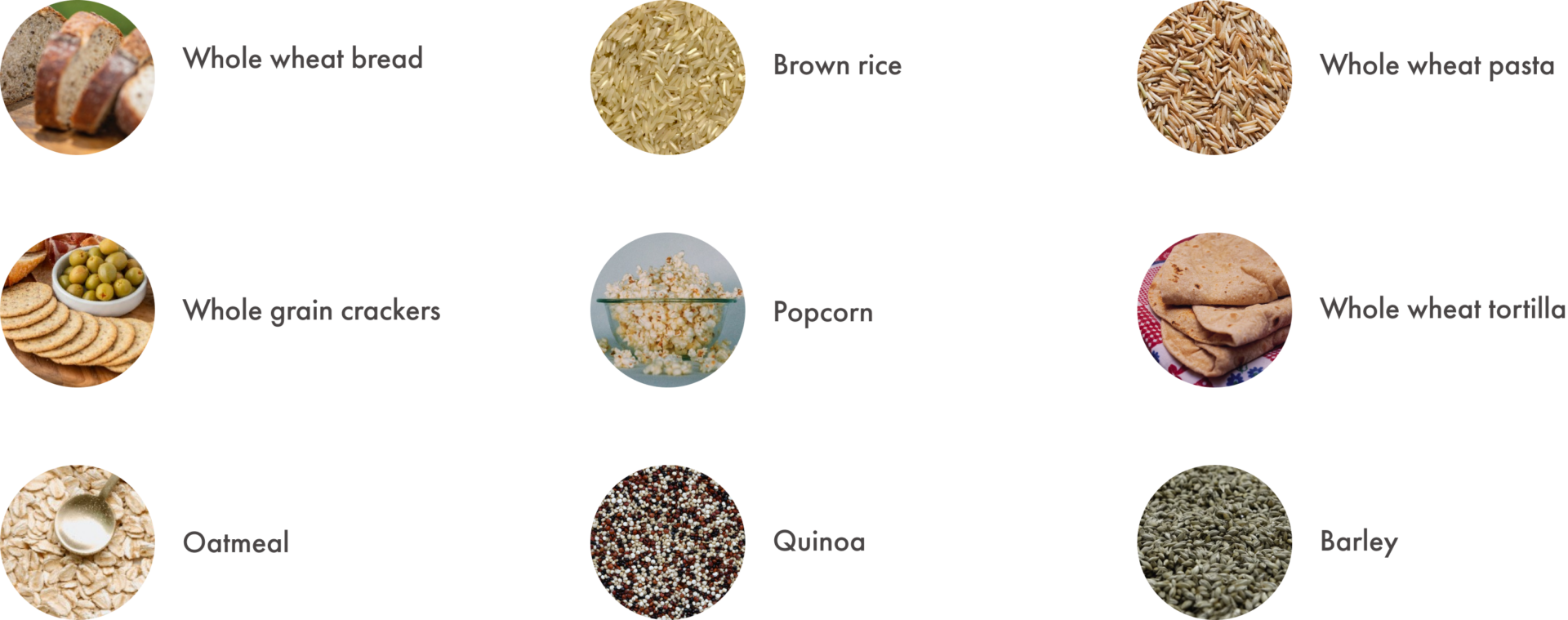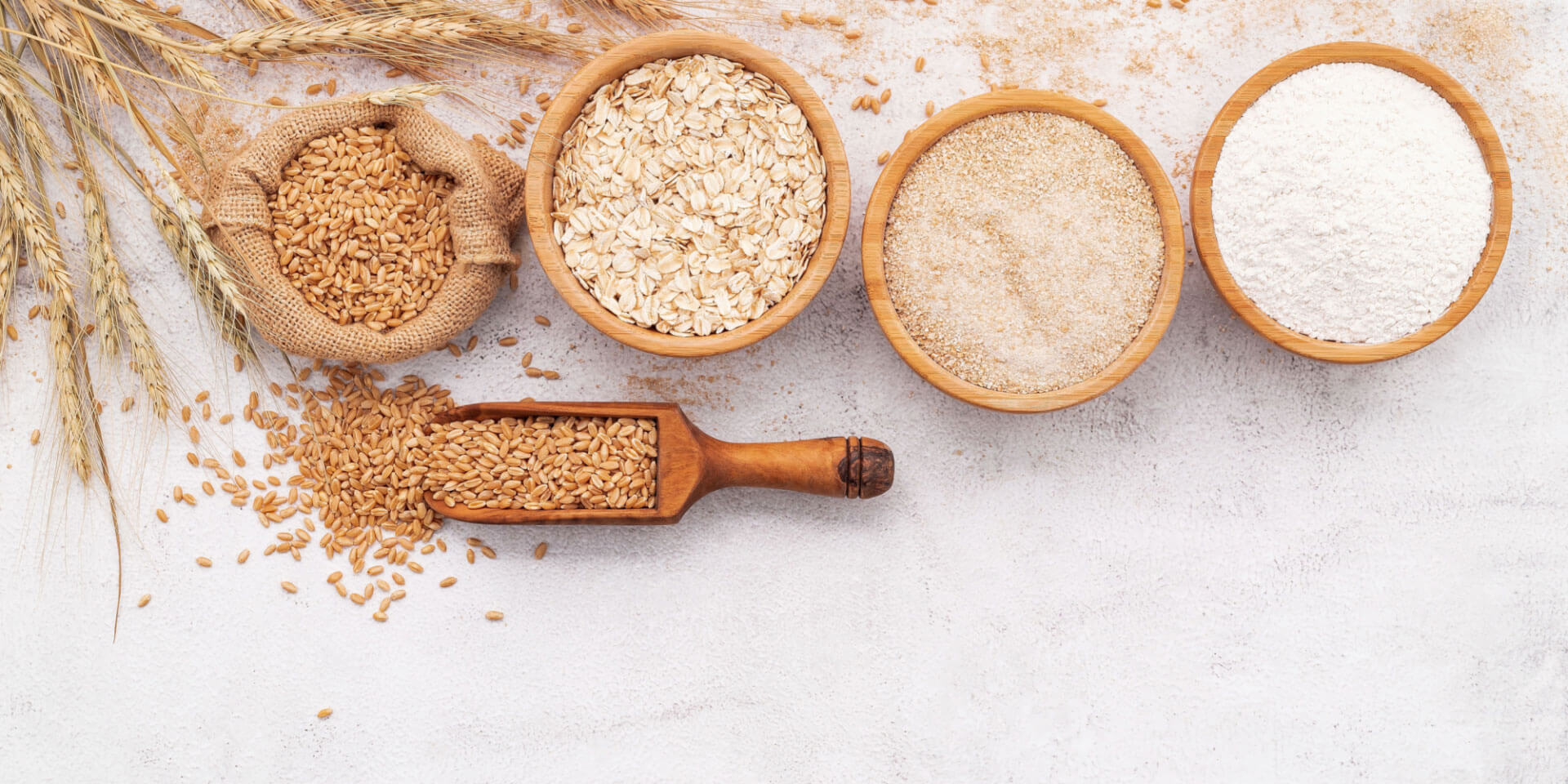You may know that whole grains are important to eat, but how exactly are they different from other grain foods and what are the benefits? Read on to learn more, and you might be surprised about some whole grain foods!
What’s the difference between whole grains and refined grains?
Whole grains contain the entire grain kernel, which includes three parts: the bran, the germ, and the endosperm.
Refined grains go through processing which removes the bran and germ, and along with it, beneficial fiber, iron, and vitamins. While refined grains are often enriched to add back in some of the vitamins and iron, fiber isn’t added back in.
Try to make it a goal to make at least half the grains you and your family eat whole grains to get the most nutritional benefit.
How can I tell if a food is made of whole grains or refined grains?
It can be tricky finding whole grain foods with various labels on foods like “multi-grain” and “cracked wheat” because those don’t necessarily mean whole grain. Only foods made with 100% whole grains are considered whole grain foods. Look for the words “whole grain” in the list of ingredients, or if the first ingredient is whole wheat flour, then you can ensure it is a great source of whole grains. Some food packaging also showcases the amount of whole grains in the product. While looking for products with whole grains, also make sure to keep an eye on sugars to choose products with lower added sugar.
| Examples of whole grain foods include: | Examples of refined grain foods include: |
|---|---|
| Whole Wheat Bread | White Bread |
| Brown Rice | White Rice |
| Whole Wheat Flour | White Flour |
Most Americans eat the recommended amount of grains, but don’t eat enough whole grains. Check out below for more examples of whole grain foods.
Why are whole grains important?

How much should my kids eat?
The amount of total grains kids need depends on their age, sex, height, weight, and physical activity, but below is a general guide to how much kids should consume – and quick reminder that at least half the grains should be whole grains. The U.S. Department of Agriculture (USDA) uses 1 ounce-equivalents (oz-equiv) for the recommendations to make it easier to compare across the various foods (more on this below!).
| Age | Girls | Boys |
| 2-3 | 1½ to 3 oz-equiv | 1½ to 3 oz-equiv |
| 4-8 | 2 to 3 oz-equiv | 2 to 3 oz-equiv |
| 9-13 | 2½ to 3½ oz-equiv | 3 to 4½ oz-equiv |
| 14-18 | 3 to 4 oz-equiv | 3 to 5 oz-equiv |
Below are some examples of 1 oz-equiv of various grain foods. Find more examples here.
- 1 slice of bread
- ½ English muffin
- 1 tortilla (6” diameter)
- 1 cup of cereal
- ½ cup of cooked rice, pasta, couscous, quinoa, or oatmeal
- 3 cups of popcorn
For instance, if you have a 12 year old son, he should get 3-4½ oz-equiv, which he could do by having:
- ½ cup of oatmeal (1 oz-equiv)
- 2 slices of whole wheat bread (2 oz-equiv)
- ½ cup of cooked whole wheat pasta (1 oz-equiv)
Even if you swapped the whole wheat pasta for a non-whole wheat version, half of his grains would be whole grains.
Sources of Whole Grains

What questions do you have about grains? Hit us up on Instagram @plezinutrition, we always love to hear from you.
Sources:

